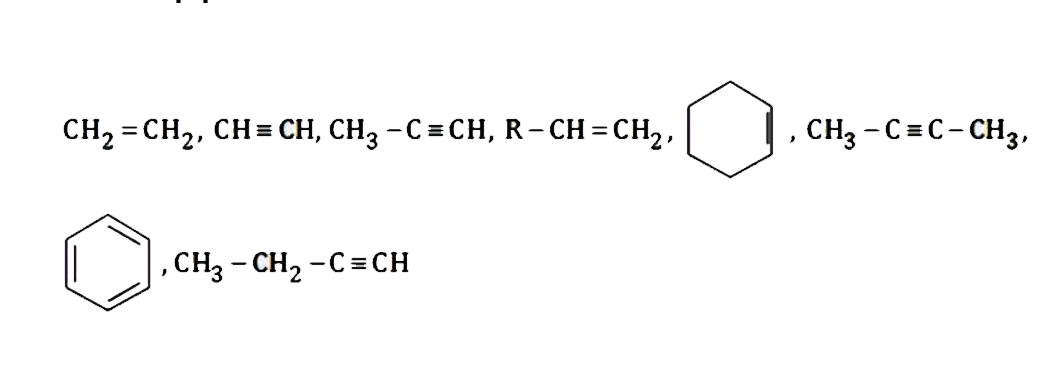How many of these compounds can react with ammoniacal silver nitrate solution to give white ppt.

The correct Answer is:3
Step by step video & image solution for How many of these compounds can react with ammoniacal silver nitrate solution to give white ppt. by Chemistry experts to help you in doubts & scoring excellent marks in Class 12 exams.
Updated on:21/07/2023Similar Questions
Knowledge Check
Which of the following alkynes can be identified and distinguished from the rest of the alkynes on reaction with ammoniacal silver nitrate to gave a white presipitate?
ACH3C≡C−CH3BCH3CH2C≡CHCCH3CH2C≡CCH3DCH3C≡CCH2CH2CH3A metallic carbide on treatment with water gives a colourless gas which burns readily in air and gives a precipitate with ammoniacal silver nitrate solution. The gas evolved is
AmethaneBethaneCacetyleneDethylene
Which of the following will not react with an ammonical silver nitrate solution :
View SolutionSilver nitrate solution is used to study
View SolutionCompounds capable of reacting with ammoniacal AgNO3 solution
are
View SolutionIdentify the anion present in the following compound : When a solution of compound Y is treated with silver nitrate solution a white precipitate is obtained which is soluble in excess of ammonium hydroxide solution.
View SolutionIdentify the anion present in the following compounds:
i] Compound X on heating with copper turnings & conc. sulphuric acid liberates a reddish brown gas.
ii] When a solution of compound Y is treated with silver nitrate solution a white precipitate is obtained which is soluble in excess of ammonium hydroxide solution.
iii] Compound Z which on reacting with dilute sulphuric acid liberates a gas which turns lime water milky, but the gas has no effect on acidified potassium dichromate solution.
iv] Compound L on reacting with barium chloride solution gives a white precipitate insoluble in dilute hydrochloric acid or dilute nitric acid.
View SolutionName the anion in each of the following compounds :
Compound 'X' reacts with barium chloride solution to give a white precipitate insoluble in dil. hydrochloric acid.
View Solution